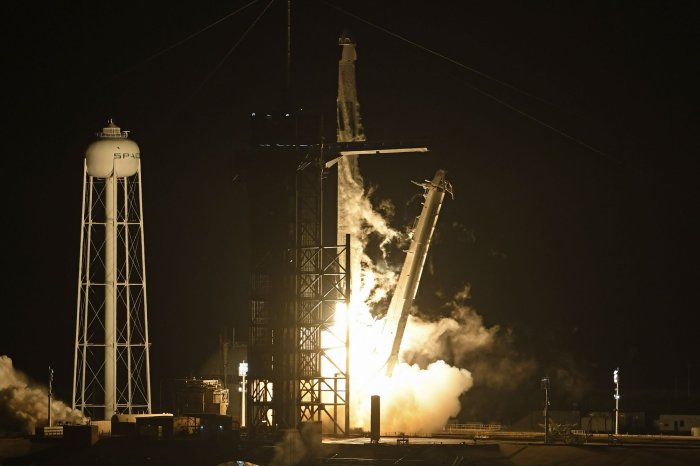1 of 5 | A SpaceX Falcon 9 rocket launches Starlink satellites from Florida in May. File Photo by Joe Marino/UPI |
License Photo
Jan. 18 (UPI) -- SpaceX successfully launched 49 Starlink satellites from Florida on Tuesday evening, bringing the total number of Starlinks launched to over 2,000.
The Falcon 9 rocket lifted off from Complex 39A at Kennedy Space Center just after 9 p.m. after it was originally scheduled for 7:04 p.m. EST but was delayed within 15 minutes of the original launch time.
Only 1,741 of the broadband Internet communications satellites were still in orbit before the launch, SpaceX founder and CEO Elon Musk said on Twitter.
That means about 252 of the spacecraft have either deorbited or become inoperable. according to calculations by Harvard University astronomer Jonathan McDowell.
The first-stage rocket booster on Tuesday's launch has been used nine times before, six of which were also Starlink missions, according to SpaceX.
SpaceX successfully recovered the booster after launch on a barge in the Atlantic Ocean, making it the second such booster to be flown and recovered 10 times.
The Starlink network is designed to provide high-speed Internet access to customers in remote areas, but also is available in many major cities.
But SpaceX eventually wants to deploy thousands more satellites, which has raised concerns about space debris and interruptions to astronomy observations. The satellites can cause streaks of light across images of planets, stars and other space objects.
SpaceX has made adjustments to make the satellites less visible, including visors that shield the spacecraft from sunlight, but astronomers are still concerned, McDowell said.
The visors "did make some improvement to the astronomy situation; what isn't clear yet is how bright the new generation" of Starlink satellites are, he said. "Hopefully further observations will tell us that."
A new paper published in The Astrophysical Journal Letters on Friday by the American Astronomical Society reported a growing impact of Starlink on astronomy.
Certain types of observations made at the Palomar Observatory in California had 5,301 streaks from Starlink satellites in them, from November 2019 to September, according to the paper.
"We find that the number of affected images is increasing with time as SpaceX deploys more satellites," the authors of the paper said.
However, they wrote that the science operations that were analyzed "are not yet strongly affected" and that the visors were effective in reducing brightness of the satellites in images.
The SpaceX Falcon 9 rocket launches NASA's third crew to the International Space Station at 9:03 p.m. November 10 from the Kennedy Space Center in Florida. Photo by Joe Marino/UPI |
License Photo
















